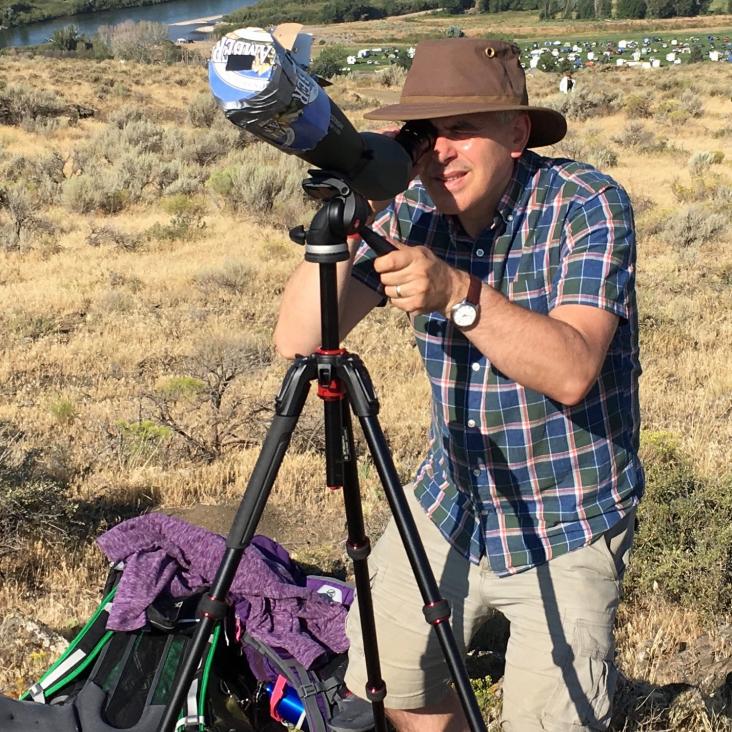A novel heterodyne interferometer for millimetre and sub-millimetre astronomy
Proceedings of the 19th International Symposium on Space Terahertz Technology, ISSTT 2008 (2008) 274-280
Abstract:
We describe a novel heterodyne interferometer currently under construction at Oxford. The instrument employs new techniques in heterodyne interferometry, with the aim of achieving very high brightness sensitivity in the millimetre band. It is a single-baseline tracking interferometer for operation in the frequency range 185-275 GHz with two 0.4m offset parabolic antennas separated by a 0.5 m baseline. Each antenna feeds an SIS mixer with a 2-20 GHz IF band, driven by a phase-switched LO source. The IF signals from the mixers are processed by a 2-20 GHz analogue complex correlator. The primary science goal of this instrument is to measure the spectrum of the Sunyaev-Zel'dovich effect in galaxy clusters. In particular we intend to measure the frequency of the S-Z null near 217 GHz, which allows the gas temperature of the cluster to be determined. Measuring the spectrum of the S-Z effect requires very high brightness sensitivity with moderate spatial and spectral resolution.The Cℓ over experiment
Proceedings of SPIE - The International Society for Optical Engineering 7020 (2008)
Abstract:
CℓOVER is a multi-frequency experiment optimised to measure the Cosmic Microwave Background (CMB) polarization, in particular the B-mode component. CℓOVER comprises two instruments observing respectively at 97 GHz and 150/225 GHz. The focal plane of both instruments consists of an array of corrugated feed-horns coupled to TES detectors cooled at 100 mK. The primary science goal of CℓOVER is to be sensitive to gravitational waves down to r ∼ 0.03 (at 3σ) in two years of operations.Radio source calibration for the VSA and other CMB instruments at around 30 GHz
Monthly Notices of the Royal Astronomical Society Oxford University Press (OUP) (2008)
Abstract:
Accurate calibration of data is essential for the current generation of CMB experiments. Using data from the Very Small Array (VSA), we describe procedures which will lead to an accuracy of 1 percent or better for experiments such as the VSA and CBI. Particular attention is paid to the stability of the receiver systems, the quality of the site and frequent observations of reference sources. At 30 GHz the careful correction for atmospheric emission and absorption is shown to be essential for achieving 1 percent precision. The sources for which a 1 percent relative flux density calibration was achieved included Cas A, Cyg A, Tau A and NGC7027 and the planets Venus, Jupiter and Saturn. A flux density, or brightness temperature in the case of the planets, was derived at 33 GHz relative to Jupiter which was adopted as the fundamental calibrator. A spectral index at ~30 GHz is given for each. Cas A,Tau A, NGC7027 and Venus were examined for variability. Cas A was found to be decreasing at $0.394 \pm 0.019$ percent per year over the period March 2001 to August 2004. In the same period Tau A was decreasing at $0.22\pm 0.07$ percent per year. A survey of the published data showed that the planetary nebula NGC7027 decreased at $0.16\pm 0.04$ percent per year over the period 1967 to 2003. Venus showed an insignificant ($1.5 \pm 1.3$ percent) variation with Venusian illumination. The integrated polarization of Tau A at 33 GHz was found to be $7.8\pm 0.6$ percent at pa $ = 148^\circ \pm 3^\circ$.}Radio source calibration for the Very Small Array and other cosmic microwave background instruments at around 30 GHz
\mnras 388 (2008) 1775-1786


